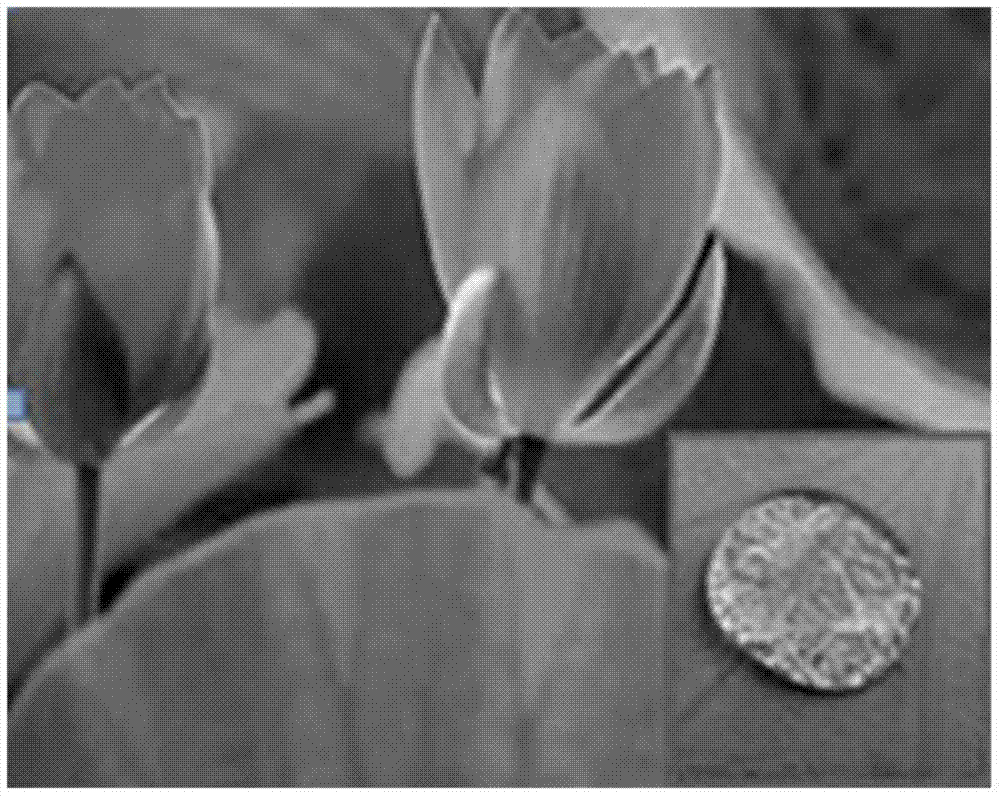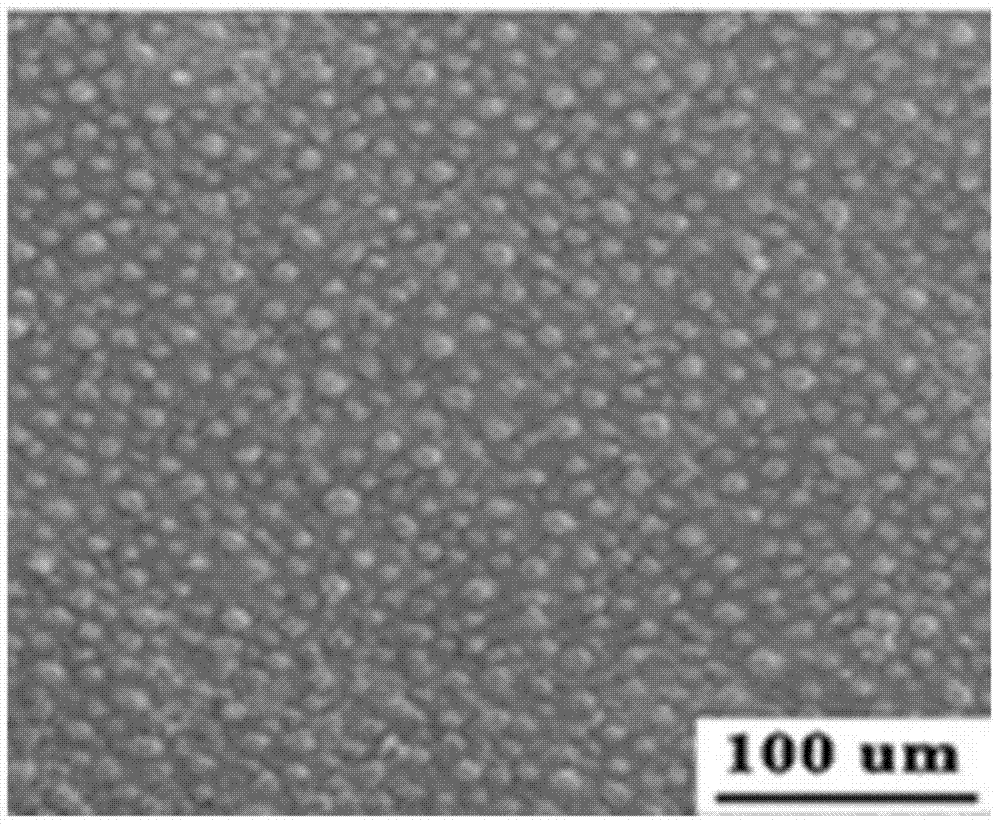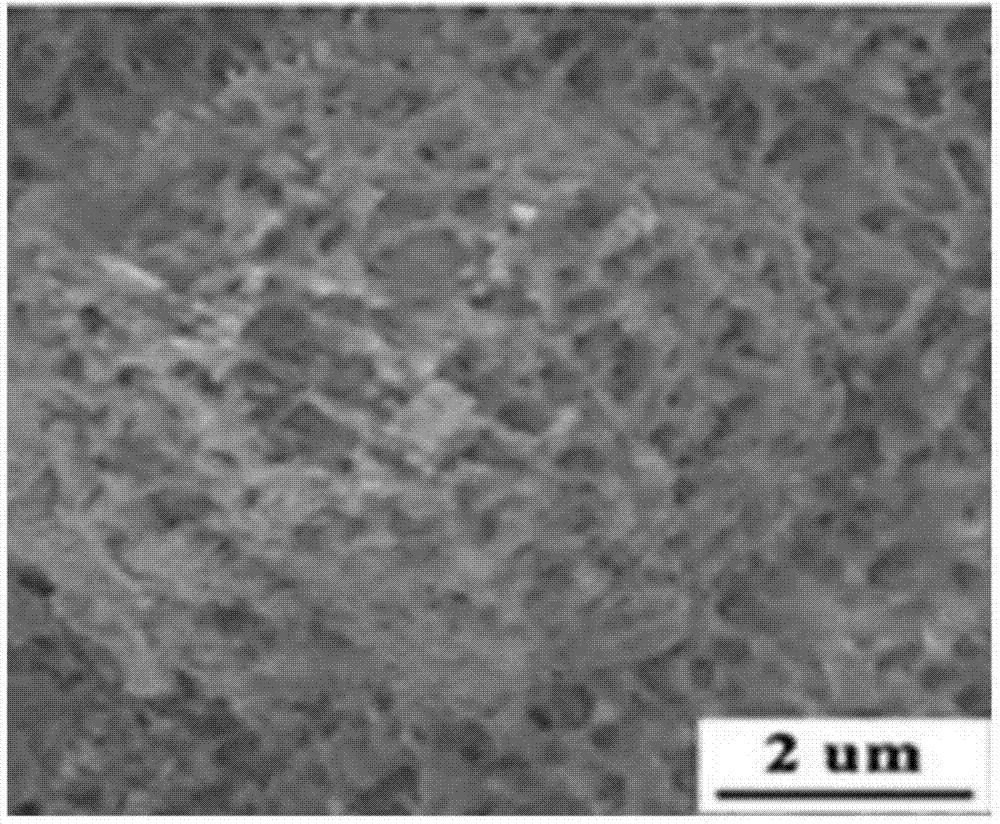Preparation method of lotus-like super-hydrophobic self-cleaning surface
A super-hydrophobic, self-cleaning technology, applied in the field of silicone rubber microarray preparation, can solve the problem of insufficient quantitative research on surface microstructure chemical composition, geometry and surface wettability, inability to optimize surface microstructure technical parameters, and inability to guide Super-hydrophobic surface design and other issues have achieved good application prospects, good mechanical stability, and strong acid and alkali corrosion resistance.
- Summary
- Abstract
- Description
- Claims
- Application Information
AI Technical Summary
Problems solved by technology
Method used
Image
Examples
specific Embodiment approach 1
[0033] Specific implementation mode 1: This implementation mode prepares the imitation lotus leaf superhydrophobic surface according to the following steps:
[0034] The first step, hydrogen bubble template method to prepare porous Ni film ( Figure 4 )
[0035] Platinum sheet (1cm 2 ) as the anode, and the counter electrode is made of 304 stainless steel (1cm 2 ) is the cathode. The pretreatment of stainless steel in the experiment includes polishing, degreasing, acid etching, water washing, ethanol immersion, acetone cleaning, low temperature blast drying, and sticking tape on the back of the stainless steel. The composition of the plating solution is 0.02-0.4mol L -1 NiCl 2 , 0.5-4mol·L -1 NH 4 Cl and 2wt.% acetic acid, the pH is controlled within the range of 4.0±0.5, and the current density range of electrodeposition is 1.0-6.0A·cm -2 , the deposition time is 10-40s. The structure and morphology of the porous Ni film were constructed by adjusting the deposition p...
specific Embodiment approach 2
[0041] Specific implementation mode two: this implementation mode prepares imitation lotus leaf superhydrophobic surface according to the following steps:
[0042] Step 1. Preparation of porous Ni film by hydrogen bubble template method
[0043] Electrodeposition of porous Ni thin films by hydrogen bubble template method is based on platinum sheet (1cm 2 ) as the anode, and the counter electrode is made of 304 stainless steel (1cm 2 ) is the cathode. The pretreatment of stainless steel in the experiment includes polishing, degreasing, acid etching, water washing, ethanol immersion, acetone cleaning, low temperature blast drying, and sticking tape on the back of the stainless steel. The composition of the plating solution is 0.2mol L -1 NiCl 2 , 2mol L -1 NH 4 Cl and 2wt.% acetic acid, the pH is controlled within the range of 4.0±0.5, and the current density of electrodeposition is 3A cm -2 , the deposition time is 30s. The deposited thin film should be immediately rins...
specific Embodiment approach 3
[0050] Specific embodiment three: In this embodiment, the imitation lotus leaf superhydrophobic surface is prepared according to the following steps:
[0051] Step 1. Preparation of porous Ni film by hydrogen bubble template method
[0052] Electrodeposition of porous Ni thin films by hydrogen bubble template method is based on platinum sheet (1cm 2 ) as the anode, and the counter electrode is made of 304 stainless steel (1cm 2 ) is the cathode. The pretreatment of stainless steel in the experiment includes polishing, degreasing, acid etching, water washing, ethanol immersion, acetone cleaning, low temperature blast drying, and sticking tape on the back of the stainless steel. The composition of the plating solution is 0.2mol L -1 NiCl 2 , 2mol L -1 NH 4 Cl and 0.001wt.% OP (polyoxyethylene octylphenol ether), the pH is controlled within the range of 4.0 ± 0.5, and the current density of electrodeposition is 3A cm -2 , the deposition time is 30s. The deposited film sho...
PUM
| Property | Measurement | Unit |
|---|---|---|
| Surface area | aaaaa | aaaaa |
| Diameter | aaaaa | aaaaa |
| Height | aaaaa | aaaaa |
Abstract
Description
Claims
Application Information
 Login to View More
Login to View More - R&D
- Intellectual Property
- Life Sciences
- Materials
- Tech Scout
- Unparalleled Data Quality
- Higher Quality Content
- 60% Fewer Hallucinations
Browse by: Latest US Patents, China's latest patents, Technical Efficacy Thesaurus, Application Domain, Technology Topic, Popular Technical Reports.
© 2025 PatSnap. All rights reserved.Legal|Privacy policy|Modern Slavery Act Transparency Statement|Sitemap|About US| Contact US: help@patsnap.com



